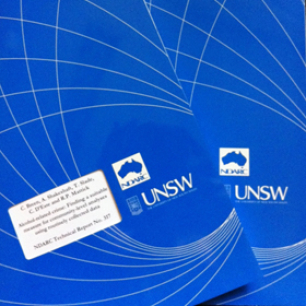NDARC Technical Report No. 119
EXECUTIVE SUMMARY
Staff at the National Drug and Alcohol Research Centre (NDARC) first became aware of reports of significant decreases in the availability of heroin in Sydney in the second week of January 2001. A simplified form of the Illicit Drug Reporting System (IDRS) was implemented in mid February to examine the credibility of these reports. This study serves as a pilot for more extensive research and as a baseline to provide an estimate of the onset and extent of the reported reduction in heroin availability.
Data were collected from interviews with Injecting Drug Users (IDUs) and Key Informants. Forty-one IDUs in the Kings Cross area of inner-city Sydney were questioned on a number of topics related to their heroin use and their recent experience of the drug market (see Appendix A). Ten Key Informants were questioned about possible indicators of changes in the drug market based on their contact with heroin users (see Appendix B).
Almost all IDUs reported that heroin was harder to obtain at time of interview (mid February) than it was before Christmas 2000. Most users reported that the shortage began around Christmas/New Year. They also reported a statistically significant increase in the average time required to procure heroin.
Eight of ten Key Informants stated that they had heard of a heroin shortage from the IDUs with whom they have contact. The average time they had perceived heroin to be less available was just over four weeks.
Eighty-three percent of IDU participants and seven of the ten Key Informants stated that the price of heroin had increased since Christmas. Seventy-three percent of IDU participants stated that the purity of heroin has decreased since Christmas and 66 percent reported current heroin purity to be low. Eight out of ten Key Informants reported a reduction in heroin purity.
When questioned about drug use IDUs reported an overall reduction in heroin use and many reported an increase in other drug use as a result of the shortage. Forty-four percent of IDUs stated that they were using more cocaine, 20 percent reported an increase in benzodiazepine use and 10 percent an increase in cannabis use. Nine of the ten Key Informants reported an increase in the use of drugs other than heroin among IDUs they had contact with, specifically cocaine, benzodiazepines, cannabis and amphetamines.
Over half the Key Informants reported an increase in both property and violent crime as a result of the heroin shortage. This crime was reportedly occurring mostly between heroin suppliers and/or IDUs. IDUs were not questioned specifically on this issue.
There was some evidence, both anecdotal and from newspaper reports, that rates of heroin related overdose had decreased during the period of the reported shortage. Nine out of ten Key Informants also expressed some concern about a possible increase in overdoses if or when heroin supplies returned to normal.
Most Key Informants stated that the shortage of heroin had led to an increase in requests from IDUs for drug treatment. All Key Informants who reported increases in requests for treatment said that IDU were predominately seeking methadone treatment. IDU participants were not asked directly if the reduction in heroin availability had led them to seek drug treatment.
It is interesting to note that the levels of difficulty reported by IDUs to acquire heroin has not been observed since the IDRS was first implemented. If the current shortage continues it may arguably be the most dramatic reduction in heroin supply for many years.
There were some anecdotal and media reports (see Appendix C) that this lack ofheroin availability has occurred in other states, although these reports have not been sufficiently investigated for conclusions to be drawn.
The majority of IDUs participants reported that increased law enforcement was the main reason for the current decline in heroin availability. Other explanations included the occurrence of Chinese New Year and deliberate withholding of supply by high-level dealers in order to increase the price of heroin. Generally, Key Informants stated that they were unaware of why heroin was less available. Most did volunteer one or a number of the aforementioned reasons. No specific reason was favoured.
Although most sources have attributed the cause of the current heroin shortage to increased policing and law enforcement further research and analysis is required before justified conclusions can be made. Specifically, the alternative hypothesis of significant declines in production needs to be investigated adequately. It appears reasonable that only a very dramatic change in police and customs strategies, manpower and implementation could result in such a protracted and widespread change in heroin price and availability. To date, any such change has not been adequately documented.
More detailed and objective data are still required before more confident conclusions can be made about the extent of the reported shortage and its consequences. Specifically data on methadone prescription and requests for other drug treatment, data on fatal and non-fatal heroin overdoses, crime data, and drug seizure data identifying the quantity, purity and form of heroin seized should be collected.
Three recommendations were made which included increasing methadone access for IDUs, increasing education of IDUs in issues of tolerance and safer injecting practices and allowing the Kings Cross heroin injecting room trial to proceed.


